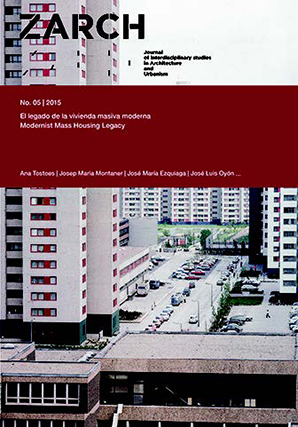Where desire may live or how to love mass housing: from cold war to the revolution
DOI:
https://doi.org/10.26754/ojs_zarch/zarch.201559114Resumen
The historiography of Modernity in architecture has seen quite a few additions in the last couple of decades. One is able to identify two main lines shifting this revision. First of all, the French philosopher Jacques Derrida (1930-2004) recently called for a new inventive faculty of ‘architectural difference’. Following the philosophical tradition to use the architectural model he recalled Descartes’s (1596- 1650) metaphor of the founding of a town and came to the point that “this foundation is in fact what is supposed to support the building, the architectonic construction, the town at the base”. The contri- bution of Derrida was, in fact, very important for questioning Modernity and Architecture as he had enlightened the importance of the ‘place’ considering that “each architectural place, each habitation has one precondition: that the building should be located on a path, at a crossroads at which arrival and departure are both possible”. In other words he pointed out that “the question of architecture is in fact that of the place, of the taking of place in space.” Finally Derrida considers that there may be an un- discovered way of thinking belonging to the architectural moment, to desire, to creation. Architecture must produce “places where desire can recognize itself, where it can live”.





